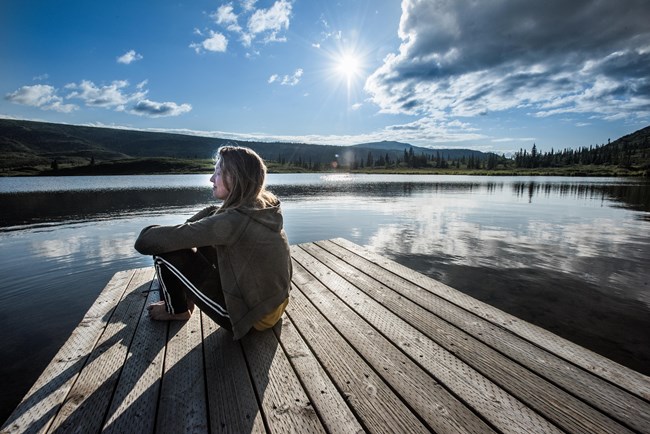Last updated: May 9, 2017
Article
Keeping the Peace and Quiet

NPS photo/Kent Miller
When we’re at home, whether a small town or a sprawling urban center, we’ve come to expect a certain level of noise. Machines surround and support us, and the noise they produce is part of our background. When we travel to public lands, including national parks, one goal is to “get away from it all.”
The sounds of nature play a powerful role in this escape: The patter of rain drops quiets the mind, while a powerful thunderstorm demands our full attention. And yips of a coyote pack remind us of the wildness in parks. Together, the natural sounds in a park create an immersive experience, allowing us to fully connect to the wilderness.
Do you think it has become more difficult to enjoy the sounds of nature? A study written by researchers at Colorado State University and the National Park Service (NPS) and published in the journal Science shows that even though parks and protected areas continue to be quieter than surrounding lands, noise now intrudes into remote areas, including some national parks. This finding is supported by 1 million hours of sound recordings in 492 sites across the continental US; most sites were in NPS units. The researchers found that 63% of protected areas are exposed to noise that masks more than half of the natural sound that would otherwise be heard. This loss of natural sounds detracts from visitors’ enjoyment and interferes with wildlife communication and behavior. Fortunately, portions of many national parks remain relatively quiet.
Noise matters. It matters to wildlife, to entire ecosystems, and to...us. Hearing the sounds of nature benefits people suffering from ADD (learning), PTSD, obesity, and diabetes. In 2016, National Parks welcomed a record-breaking 331 million visitors to hear memorable sounds, like elk bugling, the dawn chorus greeting the rising sun, and traditional Native American music.
Listen to audio postcards from Yellowstone National park.
The symphony of park sounds also enhances our experience of the setting: the quiet reverence of a battlefield, the breaking waves at a national seashore, or the whisper of leaves fluttering in wind. These sounds soothe us, they help us cope with stress, they help us learn about the world around us. Some natural sounds warn us of potential danger, like thunder, rockfalls, or flashfloods. We can’t experience our national parks in the same way when noise steals the show.
Wildlife rely on natural sounds for survival. When noise covers up natural sounds, the entire natural area shows the effects. Animals use their hearing to detect predators and prey as well as to find mates. Often wildlife only mate at certain times of the year, and noise reduction can be especially beneficial during these periods. For example, the Mexican spadefoot toad has a distinctive mating call, heard only during the summer monsoon season in places like Chaco Culture National Historical Park.
OK, so we know noise matters, but what are we doing about it?
Noise reduction is often overlooked as a management option, but happily, we can often “fix” the noise problem — rapidly, effectively, and relatively cheaply. When you turn down the volume on your stereo, the room is immediately quieter; it doesn’t take hours or days to notice the difference. In national parks, we do a lot of things to turn the noise down. Then, humans instantly enjoy the quieter places. Wildlife behavior will be restored quickly, though animals who were displaced may take some time to return.
- Posting “quiet signs,” like the ones at Muir Woods
- Install less noisy back-up alarms at Denali
- Use shuttles instead of individual vehicles to travel through parks
- Change from 2-stroke to 4-stroke engines
- Promote the Quiet Parks Program
Like dark skies and outstanding scenery, pristine soundscapes where people can escape the clamor of everyday life are sought after by visitors and merit protection. What we hear—from the flow of a river to singing birds and bugling elk—is just as magnificent as what we see.
